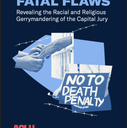Attorneys for a murder defendant who may be innocent have called for reforms in the system of federal review, and particularly to the “accumulated barriers to habeas corpus review of claims of factual innocence.” Barry Scheck of the Innocence Project, along with attorneys for Dr. Jeffrey R. MacDonald in North Carolina, pointed to the mounting evidence of MacDonald’s possible innocence that was dismissed by the federal courts until DNA evidence finally became available: “MacDonald’s various legal teams filed successive habeas petitions over the decades. All of these petitions were denied by the federal district court in North Carolina and by the 4th Circuit, in large measure because each new discovery was viewed, and analyzed, in isolation.… When the DNA test results were finally available, the 4th Circuit, in an abrupt turnaround, derided the piecemeal approach previously taken to one evidentiary discovery after another and instructed the district court this time to review ‘the evidence as a whole’ and apply ‘a fresh analysis.’ ”
The attorneys compare this approach to that taken in the case of Gregory F. Taylor, also in North Carolina, that was handled by the state authorities. In Taylor’s case, the North Carolina Innocence Inquiry Commission “helped bring to light faulty blood tests and implausible testimony” that led to his exoneration by a three-judge panel. MacDonald, by contrast, spent three decades maintaining he was innocent, and in 1997 “the courts finally acquiesced to MacDonald’s requests to test crime-scene evidence” which resulted in DNA testing of the evidence that “did not match MacDonald nor any member of the family.”
(P. Cormier, A. Good, B. Scheck and H. Silverglate, “Federal habeas corpus & actual innocence,” National Law Journal, May 16, 2011). See Innocence.



